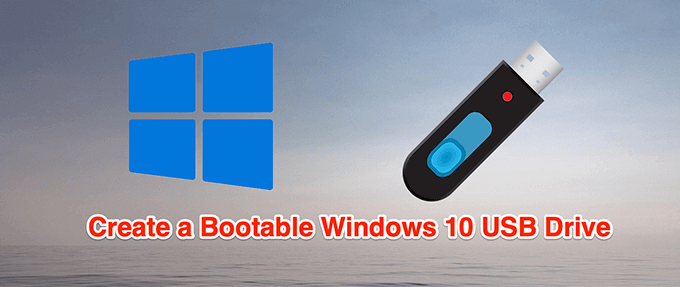

- #CREATE WINDOWS 10 BOOTABLE USB DOWNLOAD HOW TO#
- #CREATE WINDOWS 10 BOOTABLE USB DOWNLOAD INSTALL#
- #CREATE WINDOWS 10 BOOTABLE USB DOWNLOAD PC#
- #CREATE WINDOWS 10 BOOTABLE USB DOWNLOAD ISO#

#CREATE WINDOWS 10 BOOTABLE USB DOWNLOAD PC#
Also, if you’re unable to change these settings, make sure to clear the Use the recommended options for this PC option. Quick Tip: Under “Architecture,” you can select the Both option to create a bootable media that will work for devices using 64-bit and 32-bit processors.Select the correct language, architecture, and edition of Windows 10 if the default selection doesn’t reflect the desired options.
#CREATE WINDOWS 10 BOOTABLE USB DOWNLOAD ISO#

Double-click the MediaCreationToolxxxx.exe file to launch the utility.Under “Create Windows 10 installation media,” click the Download tool now button.Open the official Download Windows 10 page.Simply insert a USB flash drive with at least 4GB of storage to your own computer, then use these measures:
#CREATE WINDOWS 10 BOOTABLE USB DOWNLOAD INSTALL#
If you Are planning to upgrade or install a fresh copy of Windows 10 on a System utilizing UEFI, you can use the Media Creation Tool to create a Compatible bootable media.
#CREATE WINDOWS 10 BOOTABLE USB DOWNLOAD HOW TO#
How to create a Windows 10 UEFI boot media using Media Creation Tool If you use a USB 3.0 or 3.1 setup, I would really like to know how fast this works. Using the older USB 2.0 port and drive, it took less than five minutes to create the drive. I didn’t do this, and my bootable drive turned out fine. If you want to be really cautious, check the choice to check the device for bad blocks. Then select the disc icon near the ISO drop-down and navigate to the place of your official Windows 10 ISO.Īfter click Start and you should be good to go, within minutes. Pick the USB drive that you want to use, select your partition strategy - it’s worth noting that Rufus additionally supports a bootable UEFI drive. When you run it, setting it up is simple. One Of the first cool things about Rufus is that no installation is necessary, which means that you may stick it onto a network place, or another external drive to run it. Additionally, be certain you’re using a USB drive that’s at least 4 GB for your 32-bit version and 8 GB for your 64-bit version. To start with, be certain that you download the Windows 10 Technical Preview by joining the Windows Insider Program. Windows USB / DVD Download Tool to create a bootable disk Create Bootable USB / DVD with the ISO File Create Windows 10 USB Bootable Flash Drive using Rufus


 0 kommentar(er)
0 kommentar(er)
